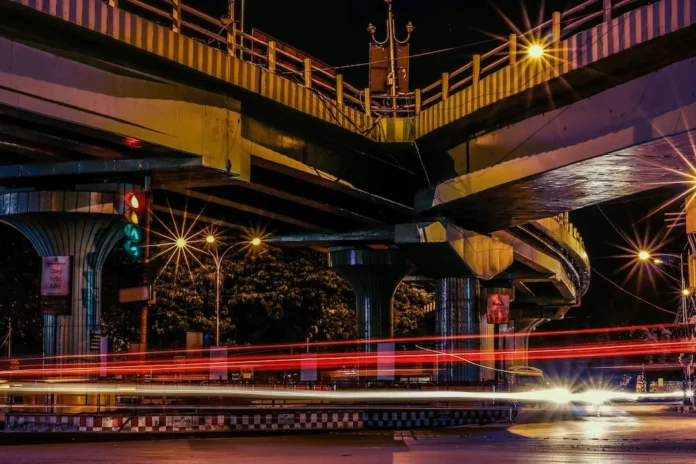Night-vision devices (NVDs) are essential tools used in aviation to enhance visibility and situational awareness during nighttime operations. These devices, also known as night-vision goggles (NVGs), allow pilots and aircrew members to see clearly in low-light conditions, such as during night flights or in environments with limited illumination. The use of NVDs in aviation has significantly improved safety and operational effectiveness, enabling flight crews to navigate, communicate, and detect potential hazards more effectively.
Due to the critical role they play in enhancing night vision, NVDs have become standard equipment in most military and civilian aviation operations. They are used in various applications, including military operations, search and rescue missions, law enforcement activities, and even recreational aviation.
Contents
The Functionality of Night-vision devices
Night-vision devices work based on the principle of image intensification. This technology amplifies the existing ambient light, such as moonlight or starlight, by thousands of times and converts it into visible images. The main components of an NVD include an objective lens, an image intensifier tube, and an eyepiece.
The objective lens collects and focuses the available light onto the image intensifier tube. The image intensifier tube then converts the incoming light into electrons, amplifies them through a process called electron multiplication, and subsequently converts them back into visible light. Finally, the eyepiece presents the intensified image to the user, allowing them to see the illuminated scene even in complete darkness.
The Types of Night-vision devices
Night-vision devices can be categorized into different types based on their design, technology, and intended use. Let’s explore some of the most commonly used types:
The Image Intensifier Tube Technology
One of the primary technologies used in NVDs is the image intensifier tube. This tube amplifies the available light and presents a clearer, brighter image to the user. Within this category, there are three generations: Gen 1, Gen 2, and Gen 3.
Gen 1 NVDs are the most basic and widely available. They offer moderate performance, with an average resolution of around 30-45 lp/mm (line pairs per millimeter) and a typical usable range of 75-100 meters.
Gen 2 NVDs, on the other hand, provide improved performance compared to Gen 1 devices. They offer a higher resolution of around 45-55 lp/mm and a greater usable range of up to 200 meters.
Gen 3 NVDs represent the most advanced technology available. They offer remarkable sensitivity, providing a resolution of at least 64 lp/mm and extending the usable range up to 300-500 meters. These devices also have a longer lifespan, making them more reliable and cost-effective for long-term use.
Thermal Imaging Technology
Another type of night-vision device commonly used in aviation is based on thermal imaging technology. Unlike image intensifier tubes that amplify existing light, thermal imaging devices detect the heat emitted by objects and create a visible image based on those temperature differences.
Thermal imagers are particularly helpful in detecting objects or individuals that may not be easily visible using traditional night-vision technology. They can detect heat signatures, allowing pilots to identify potential hazards, such as animals on the runway, engine malfunctions, or even heat leaks in the aircraft.
Advanced NVD Features and Integration
Modern NVDs often come equipped with additional features and capabilities to enhance their functionality and integration with other avionics systems. Some of these features include:
- Head-Up Display (HUD): Some NVDs can be integrated with a head-up display, allowing pilots to see critical flight information projected onto the visor of their goggles.
- Helmet-Mounted Display (HMD): HMDs take integration a step further by allowing pilots to view important data, such as altitude, airspeed, and navigation information, directly within their field of view.
- Video Recording: Many NVDs now feature the capability to record video footage, enabling post-flight analysis and training purposes.
Furthermore, NVDs can be integrated with other avionics systems, such as aircraft lighting and communication systems, to improve coordination and situational awareness during night operations.
The Importance of Night-vision devices in Aviation
The use of night-vision devices has revolutionized aviation by significantly improving flight safety, especially during nighttime operations. Here are a few key reasons why NVDs are crucial in aviation:
- Enhanced Situational Awareness: NVDs provide pilots with a clear view of their surroundings, increasing situational awareness and enabling them to detect potential hazards, such as other aircraft, terrain, or obstacles.
- Improved Navigation: By enhancing visibility during low-light conditions, NVDs allow pilots to effectively navigate, identify visual references, and maintain proper heading and altitude.
- Search and Rescue Capabilities: NVDs are invaluable tools in search and rescue operations, enabling crews to locate individuals or vessels even in the darkest environments.
- Crime Fighting and Surveillance: In law enforcement and border patrol operations, NVDs assist in detecting and monitoring suspicious activities or illegal border crossings.
- Reduced Fatigue and Eye Strain: The use of NVDs reduces pilot fatigue and eye strain by providing clearer vision and minimizing the need for excessive cockpit lighting.
- Emergency Situations: Night-vision devices are essential during emergency situations, facilitating safe landings in low-visibility conditions or when critical onboard systems fail.
These advantages emphasize the significant impact night-vision devices have on flight safety, operational efficiency, and mission success in the aviation industry.
In conclusion, night-vision devices play a critical role in aviation, enhancing visibility, situational awareness, and safety during nighttime operations. Whether utilized by military personnel, civil pilots, or law enforcement agencies, NVDs provide a valuable tool for efficiently navigating low-light environments, detecting potential hazards, and conducting successful operations. With continuous advancements in technology, the future holds even more promising developments in night-vision capabilities, further improving the safety and effectiveness of aviation operations.
For More: What is RCO in Aviation? (Remote Communications Outlet)




